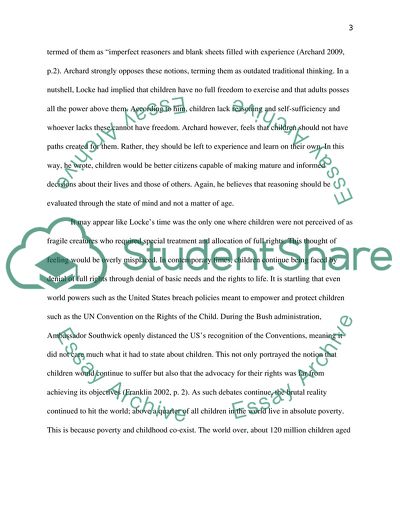Cite this document
(How Children's Rights towards Self-Determination and Autonomy Are Essay Example | Topics and Well Written Essays - 2000 words, n.d.)
How Children's Rights towards Self-Determination and Autonomy Are Essay Example | Topics and Well Written Essays - 2000 words. https://studentshare.org/family-consumer-science/1851470-critically-analyse-how-childrens-rights-towards-self-determination-and-autonomy-are-exploited-and-empowered-by-society-and-adults
How Children's Rights towards Self-Determination and Autonomy Are Essay Example | Topics and Well Written Essays - 2000 words. https://studentshare.org/family-consumer-science/1851470-critically-analyse-how-childrens-rights-towards-self-determination-and-autonomy-are-exploited-and-empowered-by-society-and-adults
(How Children'S Rights towards Self-Determination and Autonomy Are Essay Example | Topics and Well Written Essays - 2000 Words)
How Children'S Rights towards Self-Determination and Autonomy Are Essay Example | Topics and Well Written Essays - 2000 Words. https://studentshare.org/family-consumer-science/1851470-critically-analyse-how-childrens-rights-towards-self-determination-and-autonomy-are-exploited-and-empowered-by-society-and-adults.
How Children'S Rights towards Self-Determination and Autonomy Are Essay Example | Topics and Well Written Essays - 2000 Words. https://studentshare.org/family-consumer-science/1851470-critically-analyse-how-childrens-rights-towards-self-determination-and-autonomy-are-exploited-and-empowered-by-society-and-adults.
“How Children'S Rights towards Self-Determination and Autonomy Are Essay Example | Topics and Well Written Essays - 2000 Words”. https://studentshare.org/family-consumer-science/1851470-critically-analyse-how-childrens-rights-towards-self-determination-and-autonomy-are-exploited-and-empowered-by-society-and-adults.


